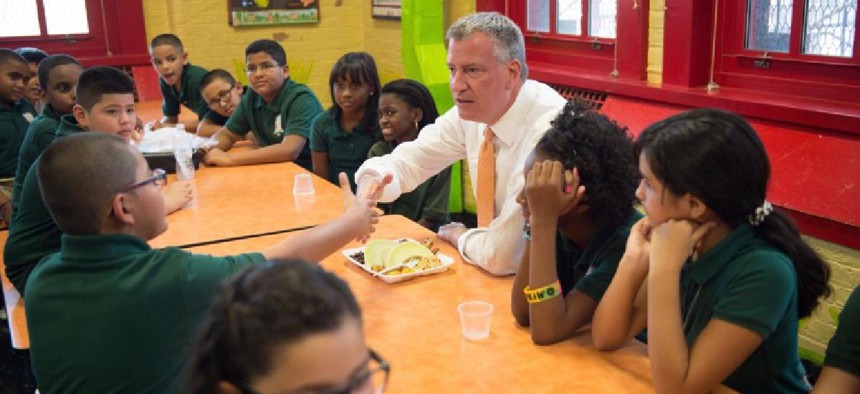Suspensions in New York City schools are continuing to fall sharply, according to data the city released Thursday.
Schools gave out 31 percent fewer suspensions in the first half of this school year than they did in 2014. Less-serious principal suspensions fell from about 23,000 last year to just over 16,500 during that period. The more serious superintendent suspensions also dropped slightly, from about 6,600 last year to 6,480 this year.
The drop in suspensions is a victory for the de Blasio administration, which has aimed to reduce punitive discipline in schools. Last year, the city implemented a new discipline code that introduced a new review process for suspensions for insubordination and restrictions on handcuffing students. The Department of Education and City Council members have also put more funding toward training staff members in how to implement alternatives to suspension.
But the city is also facing criticism from advocates who have questioned the de Blasio administration’s approach to school safety, and worked to publicize recent cases where students brought guns to school and state data pointing to increases in violent incidents. As the suspension numbers continue to drop, the city will continue to face pressure to ensure that teachers and school leaders have to the tools to deal with misbehavior without suspending students.
“The 31 percent decrease in suspensions is encouraging, but we have a lot more work to do to expand best practices and further support all students and staff in safe and supportive learning environments across the City,” Chancellor Carmen Fariña said in a statement.
The education department also reported that students were taken away by emergency medical personnel due to an emotional or psychological condition 601 times between July and December 2015 — the first time the city has reported that data.
Advocates have long criticized schools that resort to 911 calls to deal with disorderly students instead of employing other strategies to diffuse conflicts. A 2014 settlement barred schools from making 911 calls before trying to de-escalate the situation.
“This first batch of data on EMS referrals supports the call for expanding crisis intervention support for school staff and mental health services for students in our city’s schools,” said Kim Sweet, executive director of Advocates for Children of New York.
Education officials said Thursday that the department plans to make more changes to its discipline policies, expand mental health services for schools with the highest suspension rates, increase training in restorative practices for social workers and department staff, and put more counselors into schools in some districts.
While the report shows a 31 percent decline in suspensions between July and December 2015 and that period in 2014, the decline shrinks when more recent data is included. Suspension numbers from January to March 15 of this year looked more similar to last year’s, bringing the year-over-year change to 22 percent.
Demographic data on suspensions are released every October. The last round of that data showed that black students and students with disabilities continue to be disproportionately suspended.
Black students, who make up 28 percent of students, accounted for about 52 percent of suspensions in the 2014-15 school year. About 38 percent of suspensions went to students with disabilities, who make up about 18 percent of city students.
This article was first published on Chalkbeat New York on March 31.
NEXT STORY: What does the opt-out movement want this year?


